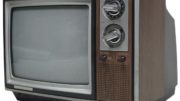Flat antennas like our HD-Blade series can be incredibly powerful, especially when you think about how it’s no thicker than a piece of cardboard. It seems impossible that something so thin can be so powerful, especially when we went through the 20th century with giant antennas that took up a large portion of your roofline.
It’s not as hard as you think
The answer is actually pretty simple: there are really two things that determine how well an antenna will perform. One is how well the elements are “tuned” the frequencies you want to use. The best antennas will have a mix of long and short elements to capture all the VHF frequencies, as well as a bowtie or loop type element to capture the UHF ones. Generally, flat antennas will have this covered with a mix of different elements in their flat or rectangular bodies. It helps that most of these antennas are designed for short range so that their effectiveness isn’t as critical. There’s going to be plenty of signal to be had if you’re five miles from the broadcast site.
It’s about how it looks when you point it right
There’s another thing to consider. The antenna has to “present itself” to the towers. This means that the receiving elements themselves are pointed in such a way that they present the right amount of surface area when facing the towers. When you put a flat antenna on the wall or on a table, the face that’s pointed to the towers is pretty thick — those elements are about 1/2″ tall or more. That’s thicker than old-school rabbit ears. See, it doesn’t matter at all that the elements aren’t thick from front to back… not at all. All that matters is the thickness when facing the towers. If you have a traditional antenna and you want a 1/2″ piece of metal facing the tower, it also has to be 1/2″ thick everywhere, sometimes even thicker so it can stand up.
The miracle of modern design
Thin antennas like this have protective plastic outer casings. This helps them stand up. You can mount them on a wall for even more support. They don’t need to be strong enough to stand up to wind like a larger outdoor antenna. That’s another reason that antennas can be so thin.
There’s another piece to this puzzle as well. Most antennas use aluminum or steel in their manufacture. Every material is different in the way it conducts electricity, and while aluminum is pretty good, silver is the best hands down. The best flat antennas, like the HD-BLADE, use silver for the receiving elements. Larger antennas use aluminum for weight and cost savings. Because these antennas are so small, and because they only need a small amount of material, silver becomes a much more effective option. Laminating the silver in plastic doesn’t make it less conductive but it does add strength.
Choose the right antenna from Solid Signal
When you buy an antenna from the great selection you find at Solid Signal, you’ll join the millions who get free TV for life. If you’re ready to buy, shop our great selection of compact indoor antennas. If you’re not sure what you’ll need, fill out this form. Certified antenna technicians will review your request. The process takes about a day, because they don’t use apps or any other shortcuts. They’ll reply to you with a list of all the parts you need, including -the proper antenna so you can get all the channels in your local area. If you’d rather work with someone over the phone, call us at 888-233-7563 during East Coast business hours.





